-
EXECUTIVE SUMMARY
-
MARKET INTRODUCTION
-
2.1.
-
Definition
-
Scope of the Study
- Research Objective
- Limitations
-
2.2.2.
-
Assumptions
-
RESEARCH METHODOLOGY
-
Overview
-
Data Mining
-
Secondary Research
-
Primary Research
- Breakdown of Primary
-
3.4.1.
-
Primary Interviews and Information Gathering Process
-
Respondents
-
Forecasting Model
-
Market Size Estimation
- Top-Down Approach
-
3.6.1.
-
Bottom-Up Approach
-
Data Triangulation
-
Validation
-
MARKET DYNAMICS
-
Overview
-
Drivers
-
Restraints
-
Opportunities
-
MARKET FACTOR ANALYSIS
-
5.1.
-
Value Chain Analysis
-
Porter’s Five Forces Analysis
- Bargaining
- Bargaining Power of Buyers
- Threat of
- Threat of Substitutes
- Intensity of Rivalry
-
Power of Suppliers
-
New Entrants
-
COVID-19 Impact Analysis
- Market Impact Analysis
- Opportunity and Threat Analysis
-
5.3.2.
-
Regional Impact
-
GLOBAL AUTOMOTIVE
-
INTAKE MANIFOLD MARKET, BY PRODUCT TYPE
-
Overview
-
Single Plane
-
Manifolds
-
Dual Plane Manifolds
-
EFI Manifolds
-
HI-RAM
-
Manifolds
-
Supercharger Intake Manifolds
-
GLOBAL AUTOMOTIVE INTAKE
-
MANIFOLD MARKET, BY MATERIAL
-
Overview
-
Aluminium
-
Plastic
-
Magnesium
-
Other Composites
-
GLOBAL AUTOMOTIVE INTAKE MANIFOLD
-
MARKET, BY APPLICATION
-
Overview
-
Light Commercial Vehicles
-
Heay Commercial Vehicles
-
Sports Cars
-
GLOBAL AUTOMOTIVE
-
INTAKE MANIFOLD MARKET, BY REGION
-
Overview
-
North America
- US
- Canada
-
Europe
- Germany
- UK
- Italy
- Spain
- Rest of Europe
-
9.2.2.
-
France
-
Asia-Pacific
- China
- India
- Japan
- Australia
- Rest of Asia-Pacific
-
9.3.4.
-
South Korea
-
Rest
- Middle East
- Africa
- Latin America
-
of the World
-
COMPETITIVE LANDSCAPE
-
Overview
-
Competitive Analysis
-
Market Share Analysis
-
Major Growth Strategy in the Global Automotive
-
Intake Manifold Market,
-
Competitive Benchmarking
-
Leading Players
-
in Terms of Number of Developments in the Global Automotive Intake Manifold Market,
-
Key developments and Growth Strategies
- New Product Launch/Service
- Merger & Acquisitions
- Joint Ventures
-
Deployment
-
Major Players Financial Matrix
- Sales & Operating Income,
- Major Players R&D Expenditure. 2022
-
COMPANY PROFILES
-
Edelbrock L.L.C
- Company Overview
- Financial Overview
- Products Offered
- Key Developments
- SWOT Analysis
- Key Strategies
-
Magnetic Marellic S.p.A.
- Company
- Financial Overview
- Products Offered
- SWOT Analysis
- Key Strategies
- Company Overview
- Financial Overview
- Products Offered
- Key Developments
- SWOT Analysis
- Key Strategies
-
Overview
-
11.2.4.
-
Key Developments
-
11.3.
-
Rochling Group
-
Holley Performance Products
- Company
- Financial Overview
- Products Offered
- SWOT Analysis
- Key Strategies
- Company Overview
- Financial Overview
- Key Developments
- SWOT Analysis
-
Overview
-
11.4.4.
-
Key Developments
-
11.5.
-
Sogefi SpA
-
11.5.3.
-
Products Offered
-
11.5.6.
-
Key Strategies
-
Keihin North America, Inc.
- Company Overview
- Financial Overview
- Products Offered
- Key Developments
- SWOT Analysis
- Key Strategies
-
Aisin Seiki Co.,
- Company Overview
- Financial Overview
- Products
- Key Developments
- SWOT Analysis
- Key
-
Ltd
-
Offered
-
Strategies
-
MAHLE GMbH
- Company Overview
- Financial
- Products Offered
- Key Developments
- Key Strategies
-
Overview
-
11.8.5.
-
SWOT Analysis
-
DONALDAON COMPANY
- Financial Overview
- Products Offered
- Key Developments
- SWOT Analysis
- Key Strategies
-
11.9.1.
-
Company Overview
-
Exide Industries limited
- Company Overview
- Financial
- Products Offered
- Key Developments
- Key Strategies
-
Overview
-
11.10.5.
-
SWOT Analysis
-
Novares
- Company
- Financial Overview
- Products Offered
- SWOT Analysis
- Key Strategies
- Company Overview
- Financial Overview
- Products Offered
- Key Developments
- SWOT Analysis
- Key Strategies
-
Overview
-
11.11.4.
-
Key Developments
-
11.12.
-
Mikuni Corporation
-
APPENDIX
-
References
-
Related
-
Reports
-
-
LIST OF TABLES
-
GLOBAL AUTOMOTIVE INTAKE MANIFOLD
-
MARKET, SYNOPSIS, 2018-2032
-
GLOBAL AUTOMOTIVE INTAKE MANIFOLD MARKET,
-
ESTIMATES & FORECAST, 2018-2032 (USD BILLION)
-
GLOBAL AUTOMOTIVE
-
INTAKE MANIFOLD MARKET, BY PRODUCT TYPE, 2018-2032 (USD BILLION)
-
GLOBAL
-
AUTOMOTIVE INTAKE MANIFOLD MARKET, BY MATERIAL, 2018-2032 (USD BILLION)
-
TABLE
-
GLOBAL AUTOMOTIVE INTAKE MANIFOLD MARKET, BY APPLICATION, 2018-2032 (USD BILLION)
-
NORTH AMERICA: AUTOMOTIVE INTAKE MANIFOLD MARKET, BY PRODUCT TYPE, 2018-2032
-
(USD BILLION)
-
NORTH AMERICA: AUTOMOTIVE INTAKE MANIFOLD MARKET, BY
-
MATERIAL, 2018-2032 (USD BILLION)
-
NORTH AMERICA: AUTOMOTIVE INTAKE
-
MANIFOLD MARKET, BY APPLICATION, 2018-2032 (USD BILLION)
-
US: AUTOMOTIVE
-
INTAKE MANIFOLD MARKET, BY PRODUCT TYPE, 2018-2032 (USD BILLION)
-
US:
-
AUTOMOTIVE INTAKE MANIFOLD MARKET, BY MATERIAL, 2018-2032 (USD BILLION)
-
TABLE
-
US: AUTOMOTIVE INTAKE MANIFOLD MARKET, BY APPLICATION, 2018-2032 (USD BILLION)
-
CANADA: AUTOMOTIVE INTAKE MANIFOLD MARKET, BY PRODUCT TYPE, 2018-2032
-
(USD BILLION)
-
CANADA: AUTOMOTIVE INTAKE MANIFOLD MARKET, BY MATERIAL,
-
CANADA: AUTOMOTIVE INTAKE MANIFOLD MARKET,
-
BY APPLICATION, 2018-2032 (USD BILLION)
-
EUROPE: AUTOMOTIVE INTAKE MANIFOLD
-
MARKET, BY PRODUCT TYPE, 2018-2032 (USD BILLION)
-
EUROPE: AUTOMOTIVE
-
INTAKE MANIFOLD MARKET, BY MATERIAL, 2018-2032 (USD BILLION)
-
EUROPE:
-
AUTOMOTIVE INTAKE MANIFOLD MARKET, BY APPLICATION, 2018-2032 (USD BILLION)
-
TABLE
-
GERMANY: AUTOMOTIVE INTAKE MANIFOLD MARKET, BY PRODUCT TYPE, 2018-2032 (USD BILLION)
-
GERMANY: AUTOMOTIVE INTAKE MANIFOLD MARKET, BY MATERIAL, 2018-2032 (USD
-
BILLION)
-
GERMANY: AUTOMOTIVE INTAKE MANIFOLD MARKET, BY APPLICATION,
-
FRANCE: AUTOMOTIVE INTAKE MANIFOLD MARKET,
-
BY PRODUCT TYPE, 2018-2032 (USD BILLION)
-
FRANCE: AUTOMOTIVE INTAKE
-
MANIFOLD MARKET, BY MATERIAL, 2018-2032 (USD BILLION)
-
FRANCE: AUTOMOTIVE
-
INTAKE MANIFOLD MARKET, BY APPLICATION, 2018-2032 (USD BILLION)
-
ITALY:
-
AUTOMOTIVE INTAKE MANIFOLD MARKET, BY PRODUCT TYPE, 2018-2032 (USD BILLION)
-
TABLE
-
ITALY: AUTOMOTIVE INTAKE MANIFOLD MARKET, BY MATERIAL, 2018-2032 (USD BILLION)
-
ITALY: AUTOMOTIVE INTAKE MANIFOLD MARKET, BY APPLICATION, 2018-2032 (USD
-
BILLION)
-
SPAIN: AUTOMOTIVE INTAKE MANIFOLD MARKET, BY PRODUCT TYPE,
-
SPAIN: AUTOMOTIVE INTAKE MANIFOLD MARKET,
-
BY MATERIAL, 2018-2032 (USD BILLION)
-
SPAIN: AUTOMOTIVE INTAKE MANIFOLD
-
MARKET, BY APPLICATION, 2018-2032 (USD BILLION)
-
UK: AUTOMOTIVE INTAKE
-
MANIFOLD MARKET, BY PRODUCT TYPE, 2018-2032 (USD BILLION)
-
UK: AUTOMOTIVE
-
INTAKE MANIFOLD MARKET, BY MATERIAL, 2018-2032 (USD BILLION)
-
UK: AUTOMOTIVE
-
INTAKE MANIFOLD MARKET, BY APPLICATION, 2018-2032 (USD BILLION)
-
REST
-
OF EUROPE: AUTOMOTIVE INTAKE MANIFOLD MARKET, BY PRODUCT TYPE, 2018-2032 (USD BILLION)
-
REST OF EUROPE: AUTOMOTIVE INTAKE MANIFOLD MARKET, BY MATERIAL, 2018-2032
-
(USD BILLION)
-
REST OF EUROPE: AUTOMOTIVE INTAKE MANIFOLD MARKET, BY
-
APPLICATION, 2018-2032 (USD BILLION)
-
ASIA-PACIFIC: AUTOMOTIVE INTAKE
-
MANIFOLD MARKET, BY PRODUCT TYPE, 2018-2032 (USD BILLION)
-
ASIA-PACIFIC:
-
AUTOMOTIVE INTAKE MANIFOLD MARKET, BY MATERIAL, 2018-2032 (USD BILLION)
-
TABLE
-
ASIA-PACIFIC: AUTOMOTIVE INTAKE MANIFOLD MARKET, BY APPLICATION, 2018-2032 (USD
-
BILLION)
-
JAPAN: AUTOMOTIVE INTAKE MANIFOLD MARKET, BY PRODUCT TYPE,
-
JAPAN: AUTOMOTIVE INTAKE MANIFOLD MARKET,
-
BY MATERIAL, 2018-2032 (USD BILLION)
-
JAPAN: AUTOMOTIVE INTAKE MANIFOLD
-
MARKET, BY APPLICATION, 2018-2032 (USD BILLION)
-
CHINA: AUTOMOTIVE
-
INTAKE MANIFOLD MARKET, BY PRODUCT TYPE, 2018-2032 (USD BILLION)
-
CHINA:
-
AUTOMOTIVE INTAKE MANIFOLD MARKET, BY MATERIAL, 2018-2032 (USD BILLION)
-
TABLE
-
CHINA: AUTOMOTIVE INTAKE MANIFOLD MARKET, BY APPLICATION, 2018-2032 (USD BILLION)
-
INDIA: AUTOMOTIVE INTAKE MANIFOLD MARKET, BY PRODUCT TYPE, 2018-2032
-
(USD BILLION)
-
INDIA: AUTOMOTIVE INTAKE MANIFOLD MARKET, BY MATERIAL,
-
INDIA: AUTOMOTIVE INTAKE MANIFOLD MARKET,
-
BY APPLICATION, 2018-2032 (USD BILLION)
-
AUSTRALIA: AUTOMOTIVE INTAKE
-
MANIFOLD MARKET, BY PRODUCT TYPE, 2018-2032 (USD BILLION)
-
AUSTRALIA:
-
AUTOMOTIVE INTAKE MANIFOLD MARKET, BY MATERIAL, 2018-2032 (USD BILLION)
-
TABLE
-
AUSTRALIA: AUTOMOTIVE INTAKE MANIFOLD MARKET, BY APPLICATION, 2018-2032 (USD
-
BILLION)
-
SOUTH KOREA: AUTOMOTIVE INTAKE MANIFOLD MARKET, BY PRODUCT
-
TYPE, 2018-2032 (USD BILLION)
-
SOUTH KOREA: AUTOMOTIVE INTAKE MANIFOLD
-
MARKET, BY MATERIAL, 2018-2032 (USD BILLION)
-
SOUTH KOREA: AUTOMOTIVE
-
INTAKE MANIFOLD MARKET, BY APPLICATION, 2018-2032 (USD BILLION)
-
REST
-
OF ASIA-PACIFIC: AUTOMOTIVE INTAKE MANIFOLD MARKET, BY PRODUCT TYPE, 2018-2032 (USD
-
BILLION)
-
REST OF ASIA-PACIFIC: AUTOMOTIVE INTAKE MANIFOLD MARKET,
-
BY MATERIAL, 2018-2032 (USD BILLION)
-
REST OF ASIA-PACIFIC: AUTOMOTIVE
-
INTAKE MANIFOLD MARKET, BY APPLICATION, 2018-2032 (USD BILLION)
-
REST
-
OF THE WORLD: AUTOMOTIVE INTAKE MANIFOLD MARKET, BY PRODUCT TYPE, 2018-2032 (USD
-
BILLION)
-
REST OF THE WORLD: AUTOMOTIVE INTAKE MANIFOLD MARKET, BY
-
MATERIAL, 2018-2032 (USD BILLION)
-
REST OF THE WORLD: AUTOMOTIVE INTAKE
-
MANIFOLD MARKET, BY APPLICATION, 2018-2032 (USD BILLION)
-
MIDDLE EAST:
-
AUTOMOTIVE INTAKE MANIFOLD MARKET, BY PRODUCT TYPE, 2018-2032 (USD BILLION)
-
TABLE
-
MIDDLE EAST: AUTOMOTIVE INTAKE MANIFOLD MARKET, BY MATERIAL, 2018-2032 (USD BILLION)
-
MIDDLE EAST: AUTOMOTIVE INTAKE MANIFOLD MARKET, BY APPLICATION, 2018-2032
-
(USD BILLION)
-
AFRICA: AUTOMOTIVE INTAKE MANIFOLD MARKET, BY PRODUCT
-
TYPE, 2018-2032 (USD BILLION)
-
AFRICA: AUTOMOTIVE INTAKE MANIFOLD MARKET,
-
BY MATERIAL, 2018-2032 (USD BILLION)
-
AFRICA: AUTOMOTIVE INTAKE MANIFOLD
-
MARKET, BY APPLICATION, 2018-2032 (USD BILLION)
-
LATIN AMERICA: AUTOMOTIVE
-
INTAKE MANIFOLD MARKET, BY PRODUCT TYPE, 2018-2032 (USD BILLION)
-
LATIN
-
AMERICA: AUTOMOTIVE INTAKE MANIFOLD MARKET, BY MATERIAL, 2018-2032 (USD BILLION)
-
LATIN AMERICA: AUTOMOTIVE INTAKE MANIFOLD MARKET, BY APPLICATION, 2018-2032
-
(USD BILLION)
-
LIST OF FIGURES
-
RESEARCH PROCESS
-
FIGURE 2
-
MARKET STRUCTURE FOR THE GLOBAL AUTOMOTIVE INTAKE MANIFOLD MARKET
-
FIGURE 3
-
MARKET DYNAMICS FOR THE GLOBAL AUTOMOTIVE INTAKE MANIFOLD MARKET
-
GLOBAL
-
AUTOMOTIVE INTAKE MANIFOLD MARKET, SHARE (%), BY PRODUCT TYPE, 2022
-
FIGURE
-
GLOBAL AUTOMOTIVE INTAKE MANIFOLD MARKET, SHARE (%), BY MATERIAL, 2022
-
FIGURE
-
GLOBAL AUTOMOTIVE INTAKE MANIFOLD MARKET, SHARE (%), BY APPLICATION, 2022
-
GLOBAL AUTOMOTIVE INTAKE MANIFOLD MARKET, SHARE (%), BY REGION, 2022
-
NORTH AMERICA: AUTOMOTIVE INTAKE MANIFOLD MARKET, SHARE (%), BY REGION,
-
EUROPE: AUTOMOTIVE INTAKE MANIFOLD MARKET, SHARE (%), BY REGION,
-
ASIA-PACIFIC: AUTOMOTIVE INTAKE MANIFOLD MARKET, SHARE (%),
-
BY REGION, 2022
-
REST OF THE WORLD: AUTOMOTIVE INTAKE MANIFOLD MARKET,
-
SHARE (%), BY REGION, 2022
-
GLOBAL AUTOMOTIVE INTAKE MANIFOLD MARKET:
-
COMPANY SHARE ANALYSIS, 2022 (%)
-
EDELBROCK L.L.C: FINANCIAL OVERVIEW
-
SNAPSHOT
-
EDELBROCK L.L.C: SWOT ANALYSIS
-
MAGNETIC
-
MARELLIC S.P.A: FINANCIAL OVERVIEW SNAPSHOT
-
MAGNETIC MARELLIC S.P.A:
-
SWOT ANALYSIS
-
ROCHLING GROUP: FINANCIAL OVERVIEW SNAPSHOT
-
FIGURE
-
ROCHLING GROUP: SWOT ANALYSIS
-
HOLLEY PERFORMANCE PRODUCTS: FINANCIAL
-
OVERVIEW SNAPSHOT
-
HOLLEY PERFORMANCE PRODUCTS: SWOT ANALYSIS
-
FIGURE
-
SOGEFI SPA: FINANCIAL OVERVIEW SNAPSHOT
-
SOGEFI SPA: SWOT ANALYSIS
-
KEIHIN NORTH AMERICA, INC.: FINANCIAL OVERVIEW SNAPSHOT
-
FIGURE
-
KEIHIN NORTH AMERICA, INC.: SWOT ANALYSIS
-
AISIN SEIKI CO., LTD:
-
FINANCIAL OVERVIEW SNAPSHOT
-
AISIN SEIKI CO., LTD: SWOT ANALYSIS
-
MAHLE GMBH: FINANCIAL OVERVIEW SNAPSHOT
-
MAHLE GMBH: SWOT
-
ANALYSIS
-
DONALDAON COMPANY: FINANCIAL OVERVIEW SNAPSHOT
-
FIGURE
-
DONALDAON COMPANY: SWOT ANALYSIS
-
NOVARES: FINANCIAL OVERVIEW SNAPSHOT
-
NOVARES: SWOT ANALYSIS
-
MIKUNI CORPORATION: FINANCIAL
-
OVERVIEW SNAPSHOT
-
MIKUNI CORPORATION: SWOT ANALYSIS

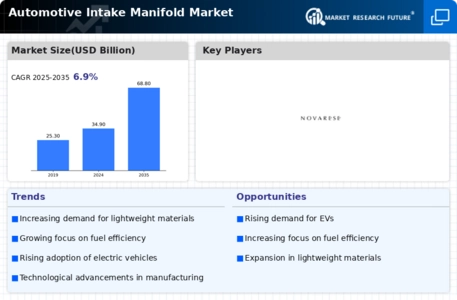
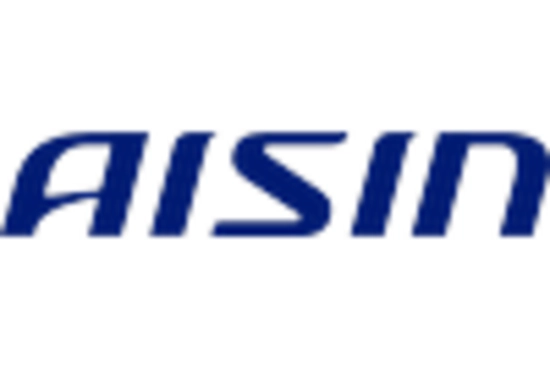
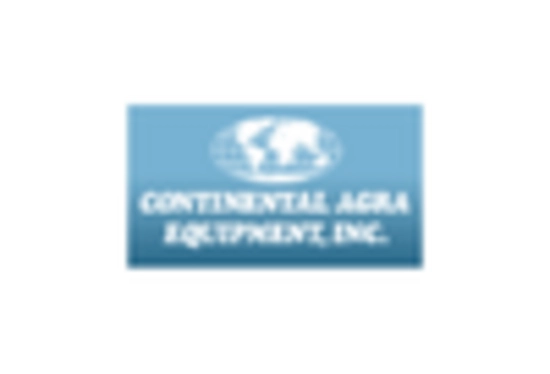
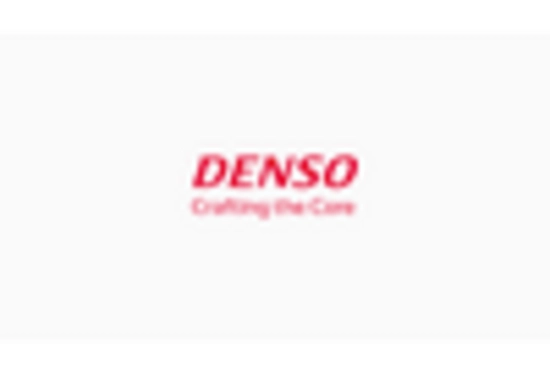
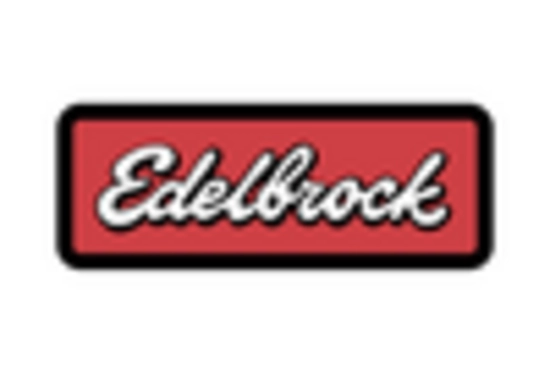
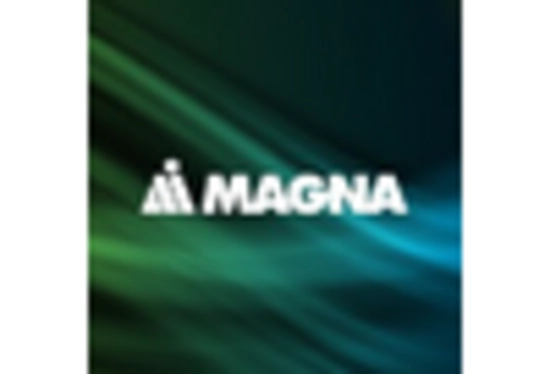
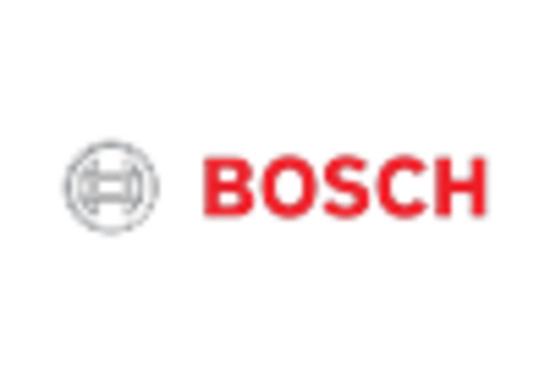

Leave a Comment